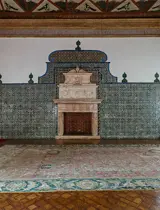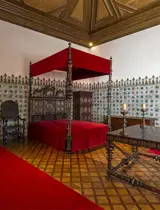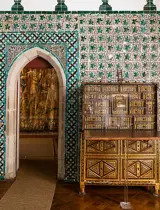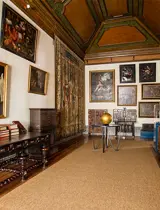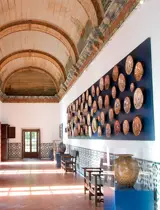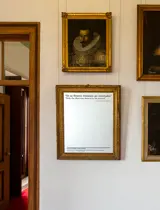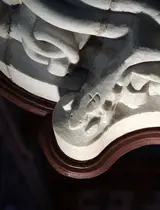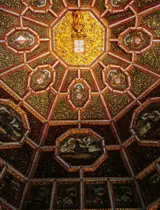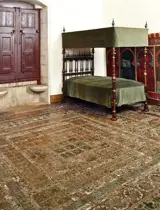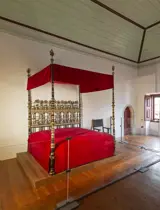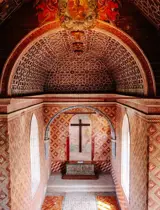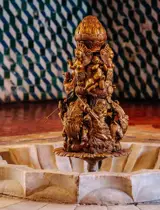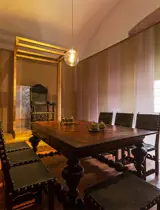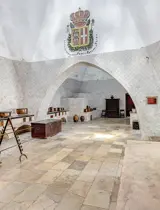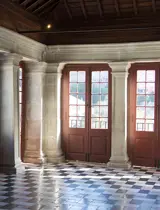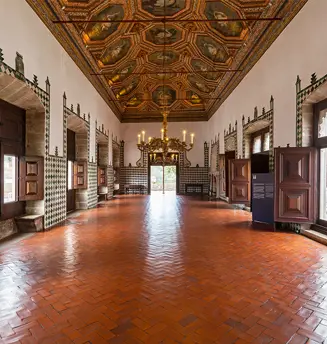
Swans Hall
Swans Hall
The Great Hall of the palace of King João I and Queen Philippa of Lancaster.
Until the 19th century, this is where the courtiers assembled and where banquets, musical soirées, public receptions, religious feasts and even funeral ceremonies were held.
The earthquake in 1755 razed part of the walls and the ceiling, but they were rebuilt shortly afterwards.
Discover the objects on display in this room.
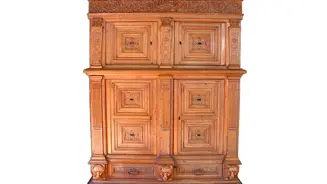
Cupboard
- Holland, 1622
- Oak and iron
- Inv. No. PNS3105
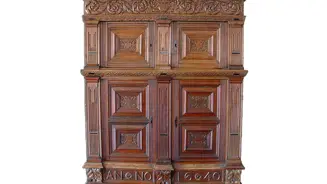
Cupboard
- Holland, 1640
- Oak and iron
- Inv. No. PNS3106
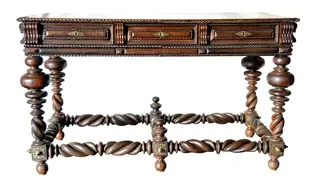
Buffet table
- Portugal, 18th century
- Rosewood and gilded metal
- Inv. No. PNS3016
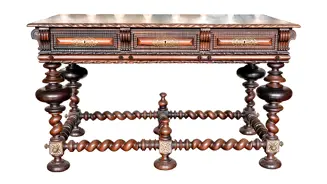
Buffet table
- Portugal, 18th century
- Rosewood and gilded metal
- Inv. No. PNS2860
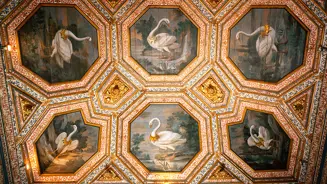
Ceiling
The name of this room comes from the panels decorating the ceiling containing crowned swans, an emblem used by the brother of Queen Philippa of Lancaster (1360–1415), Henry IV of England (1367–1413). Although much changed over time, it is thought that the current swans are based on a 14–15th-century painting when Sintra was administered by that queen.
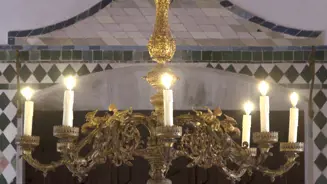
Chandelier
- Portugal, 17th-18th century
- Copper
- Inv. No. PNS5625
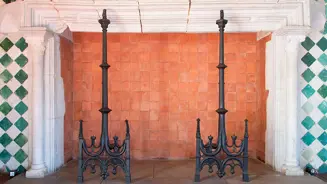
Andirons
- 15th-16th century (?)
- Iron
- Inv. No. PNS5944 / PNS5945


